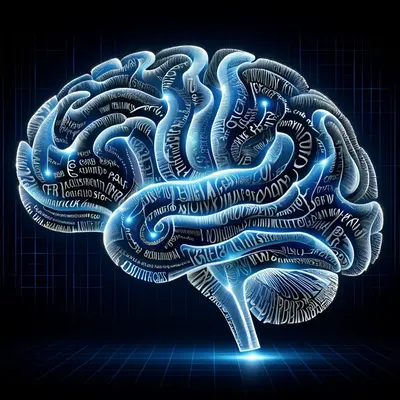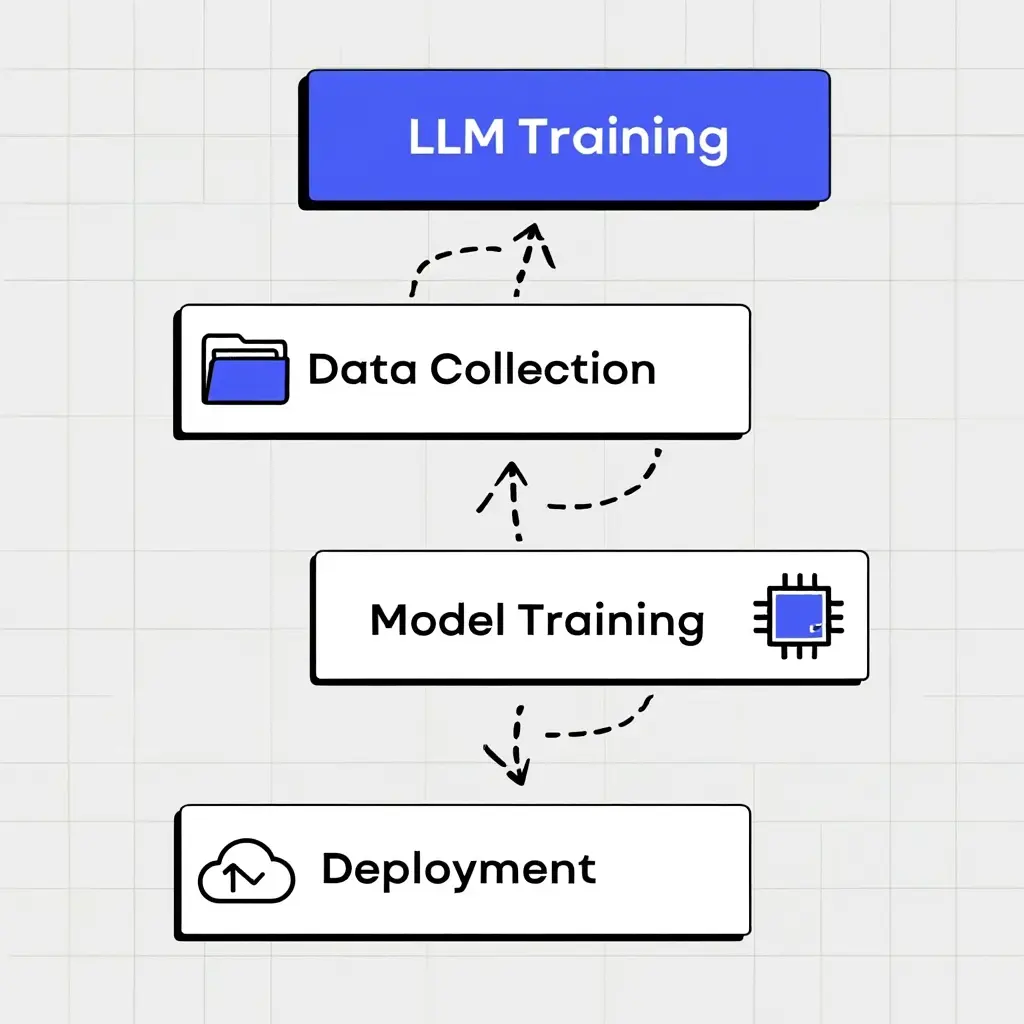You've heard the buzzwords: ChatGPT, Bard, Claude. You've probably even interacted with them. These incredible tools that can write essays, generate code, answer complex questions, and even create poetry are all powered by a revolutionary technology called Large Language Models (LLMs). But what exactly are LLMs, and how do they perform these seemingly magical feats? This beginner's illustrated guide aims to demystify Large Language Models, explaining how LLMs work in simple terms, perfect for anyone curious about the tech behind modern AI chat.

1. What is a Large Language Model (LLM)? The "Large" Picture
At its core, an LLM is a type of Artificial Intelligence model specifically designed to understand, generate, and manipulate human language. Let's break down the name:
- Large: This refers to two things:
- The enormous amount of text data they are trained on (think a significant portion of the internet, books, articles, and more).
- The massive number of parameters they contain. Parameters are like the internal "knobs" or "weights" the model adjusts during training to learn patterns. Modern LLMs can have hundreds of billions, or even trillions, of parameters.
- Language Model: This means its primary function is to predict the next word in a sequence of words. While this sounds simple, by doing this repeatedly and with incredible accuracy over vast datasets, LLMs learn grammar, context, facts, reasoning abilities, and even different writing styles.
Think of it like an incredibly sophisticated autocomplete, but one that has read more text than any human ever could and can therefore predict not just the next word, but entire coherent paragraphs, essays, or conversations.
2. How Do LLMs Learn? The Training Process Explained Simply
LLMs aren't explicitly programmed with grammar rules or a dictionary. Instead, they learn through a process called "training," primarily using a technique called self-supervised learning on massive text datasets.

A very simplified view of the training process.
Here's a simplified breakdown:
- Data Collection: A huge corpus of text is gathered from the internet, books, articles, websites, etc.
- Tokenization: Text is broken down into smaller units called "tokens" (often words or sub-words).
- Self-Supervised Learning: The model is given a sequence of tokens and tries to predict the next token. For example, given "The cat sat on the...", it tries to predict "mat".
- It makes a prediction.
- It compares its prediction to the actual next word in the training data.
- It adjusts its internal parameters (those billions of "knobs") to make a better prediction next time.
- Repetition: This process is repeated billions and billions of times across the entire dataset. Through this massive repetition, the model learns complex patterns, relationships between words, grammar, context, and even some level of reasoning.
The underlying architecture that makes much of this possible is called the **Transformer architecture**, introduced in 2017. Transformers are particularly good at handling long sequences of text and understanding which words are most important in relation to others (a concept called "attention").
3. Key Capabilities of Modern LLMs (What Makes ChatGPT Special)
Once trained, LLMs like the one powering ChatGPT exhibit a range of impressive capabilities:
- Text Generation: Creating original text in various styles (essays, poems, code, scripts, emails).
- Question Answering: Answering factual questions based on their training data.
- Summarization: Condensing long pieces of text into shorter summaries.
- Translation: Translating text between different languages.
- Sentiment Analysis: Determining if a piece of text expresses positive, negative, or neutral sentiment.
- Code Generation: Writing computer code in various programming languages.
- Conversational Ability: Engaging in coherent, multi-turn conversations, remembering previous parts of the dialogue (within a certain context window).
- Few-Shot Learning: Adapting to new tasks with very few examples provided in the prompt.
4. How You Interact: The Power of Prompts
You don't directly tweak the billions of parameters in an LLM. Instead, you interact with it using **prompts**. A prompt is the input text you give the model, like a question or an instruction.
The LLM then uses its learned patterns to generate a response that is a probable continuation of your prompt. For example:
- Prompt: "Write a short story about a friendly robot who discovers a hidden garden."
- LLM Response: The model will generate a story based on this starting point, using its understanding of "friendly robot," "hidden garden," and storytelling conventions.
Learning how to write effective prompts is a skill in itself, often called prompt engineering, and it's key to unlocking the full potential of LLMs.
5. Limitations and Considerations for 2025
Despite their power, LLMs in 2025 still have limitations:
- "Hallucinations": They can sometimes generate incorrect, nonsensical, or fabricated information with high confidence. Always verify critical information.
- Bias: LLMs can reflect biases present in their vast training data.
- Knowledge Cutoff: Their knowledge is generally limited to the data they were trained on, so they might not know about very recent events unless specifically updated or integrated with live search (like some versions of ChatGPT).
- Lack of True Understanding/Consciousness: While they can process and generate language incredibly well, they don't "understand" concepts or have consciousness in the human sense. They are sophisticated pattern-matching and prediction machines.
- Ethical Concerns: Potential for misuse in generating misinformation, spam, or impersonating individuals.
Ongoing research is focused on addressing these limitations, improving reasoning, reducing bias, and ensuring responsible development.
The Future is Conversational
Large Language Models are transforming how we interact with information and technology. They are becoming more integrated into search engines, productivity apps, creative tools, and customer service. Understanding the basics of what LLMs are and how they work is increasingly important in our AI-driven world. As an AI for beginners topic, LLMs open the door to a universe of possibilities, and their story is still being written.
What are your thoughts on LLMs? Have you had any particularly interesting or surprising interactions with tools like ChatGPT? Share in the comments below!
